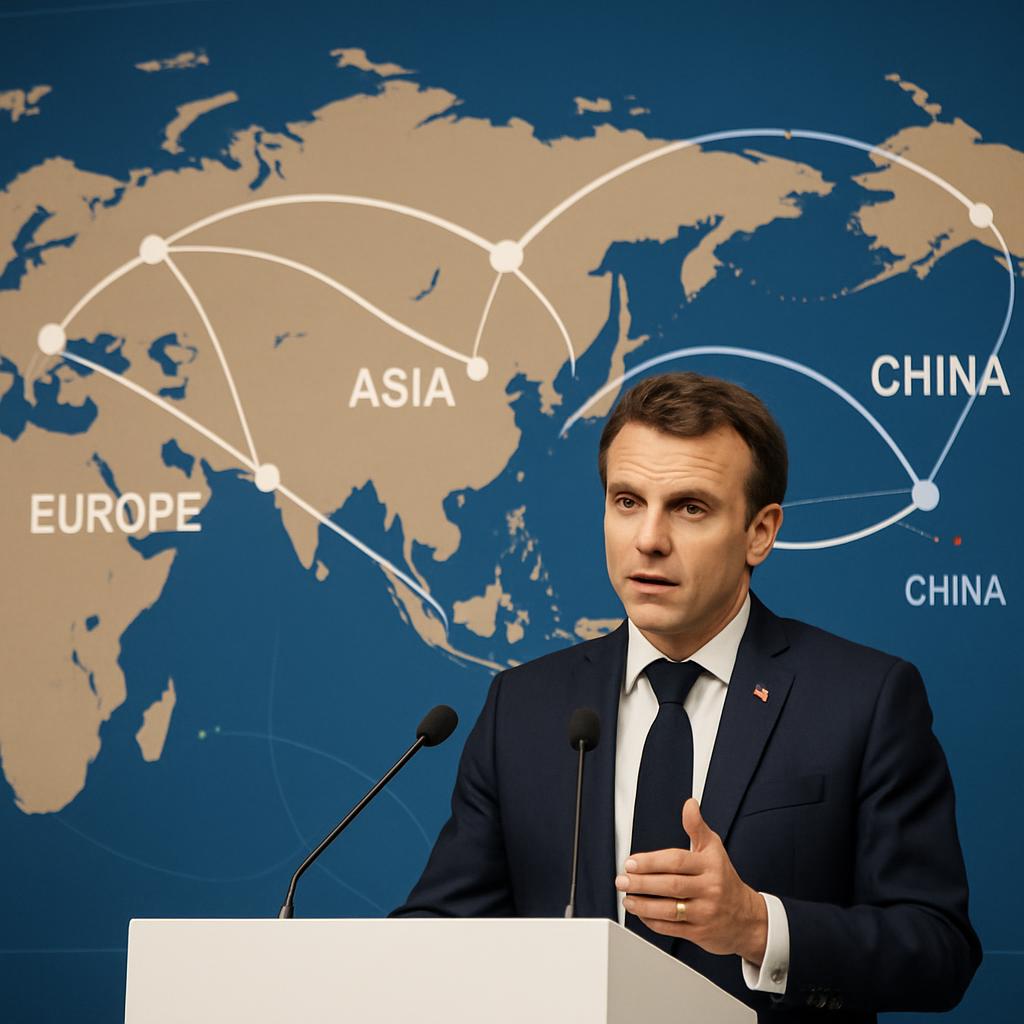The Role of Middle Powers in the Evolving Global System
The current age has often been characterized as one of great power competiton.
But this term is a bit misused, for it really comes from the 18th century when there were actually great powers.
Now we have powers that project power and influence beyond their regions, and a number of middle powers who are significant regionally and beyond on selective measures. These are the Australia’s, the Brazil’s, the South Koreas, the Japan’s and the Indians, to name the most significant.
As tensions between the United States and China continue to reshape global politics, middle powers are exploring new options to attenuate any return to bi-polarism.
Speaking at Asia’s premier defense forum in Singapore last week, President Macron underscored the challenge and the opportunity.
“If we do so we will kill the global order and we will destroy methodically all the institutions we created after the Second World War,” Macron told delegates at the Shangri-La Dialogue, referring to the pressure on countries to choose sides between Washington and Beijing.
Macron’s proposal for an “independent coalition” of European and Asian countries represents a growing recognition among middle powers that they need collective strategies to maintain influence in an era of major power competition.
The French president called for nations to work together to ensure they are not “collateral victims of the imbalances linked to the choices made by the superpowers.”
The timing of Macron’s intervention is significant. China’s rapid military buildup — including the addition of over 400 modern fighter aircraft and 20 major warships since 2021 — has raised concerns about Beijing’s growing assertiveness.
Meanwhile, the Trump administration’s demand that allies increase defense spending to 5% of GDP has heightened pressure on middle powers to pick sides.
Middle powers are recognized as playing a crucial role in the international system by promoting multilateralism, cooperation, and peaceful resolution of conflicts, able to leverage their resources and diplomatic skills to advance their national interests while contributing to global stability
Beijing has been actively courting middle powers through what analysts describe as a “multi-alignment strategy” — encouraging countries to maintain cooperative relations with multiple major powers rather than aligning strictly with one.
This approach has proven particularly effective in regions like the Middle East, where China has successfully mediated between rival powers and expanded its influence through economic partnerships.
The Belt and Road Initiative exemplifies this strategy, with around 150 countries now participating in the program that openly advocates for Chinese values such as state sovereignty and development-focused governance.
“China’s approach is designed to be compelling for nearly all countries,” noted Elizabeth Economy, a China expert at Stanford University. “Those that are not democracies will have their choices validated, while democracies that are not major powers will gain a greater voice in the international system.”
Despite the appeal of Macron’s vision, middle powers face significant obstacles in developing credible strategies to counter China’s rise. The resource asymmetry is stark — China has more than doubled its ballistic and cruise missile arsenal in recent years and possesses the world’s largest shipbuilding capacity, roughly 230 times larger than that of the United States.
Moreover, middle powers often have competing interests. European nations prioritize different strategic concerns than their Asian counterparts, and many have deep economic ties with China that complicate efforts to present a united front.
However, middle powers do have options. Rather than attempting comprehensive containment, they could focus on areas where they have comparative advantages — technology standards, environmental governance, and regional stability mechanisms.
China’s decision to send only a low-level delegation to this year’s Shangri-La Dialogue — rather than its defense minister — was seen as a signal of Beijing’s displeasure with the current trajectory of U.S.-China relations. The move highlighted China’s preference for controlling narratives and discourse, something the freewheeling format of the Singapore summit does not permit.
U.S. Defense Secretary Pete Hegseth used his keynote address to reassure allies of American commitment to the Indo-Pacific while pressing them to increase their own defense capabilities. His message that Asian allies should look to Europe as an example of increased defense spending was seen by some as patronizing to regional partners.
Whether middle powers can successfully implement Macron’s vision remains an open question. Success would require overcoming significant coordination challenges while maintaining strategic focus on achievable objectives.
France itself is undertaking a strategic review and plans to announce a new Indo-Pacific strategy in the coming weeks, potentially providing a template for other middle powers seeking to chart an independent course.
As one European diplomat told me: “We’re not trying to choose between Washington and Beijing. We’re trying to create space for countries to pursue their own interests while contributing to global stability. That’s what multilateralism is supposed to be about.”
But the role of middle powers in this world in flux will be critical in deterring how the major powers end up in terms of having effective influence and power positions in what emerges down the road.
Note: I am working my colleague Kenneth Maxwell on a book we will publish next year entitled: The Australian, Brazilian and Chinese Dynamic: An Inquiry into the Evolving Global Order.
The featured image was generated by an AI program.

